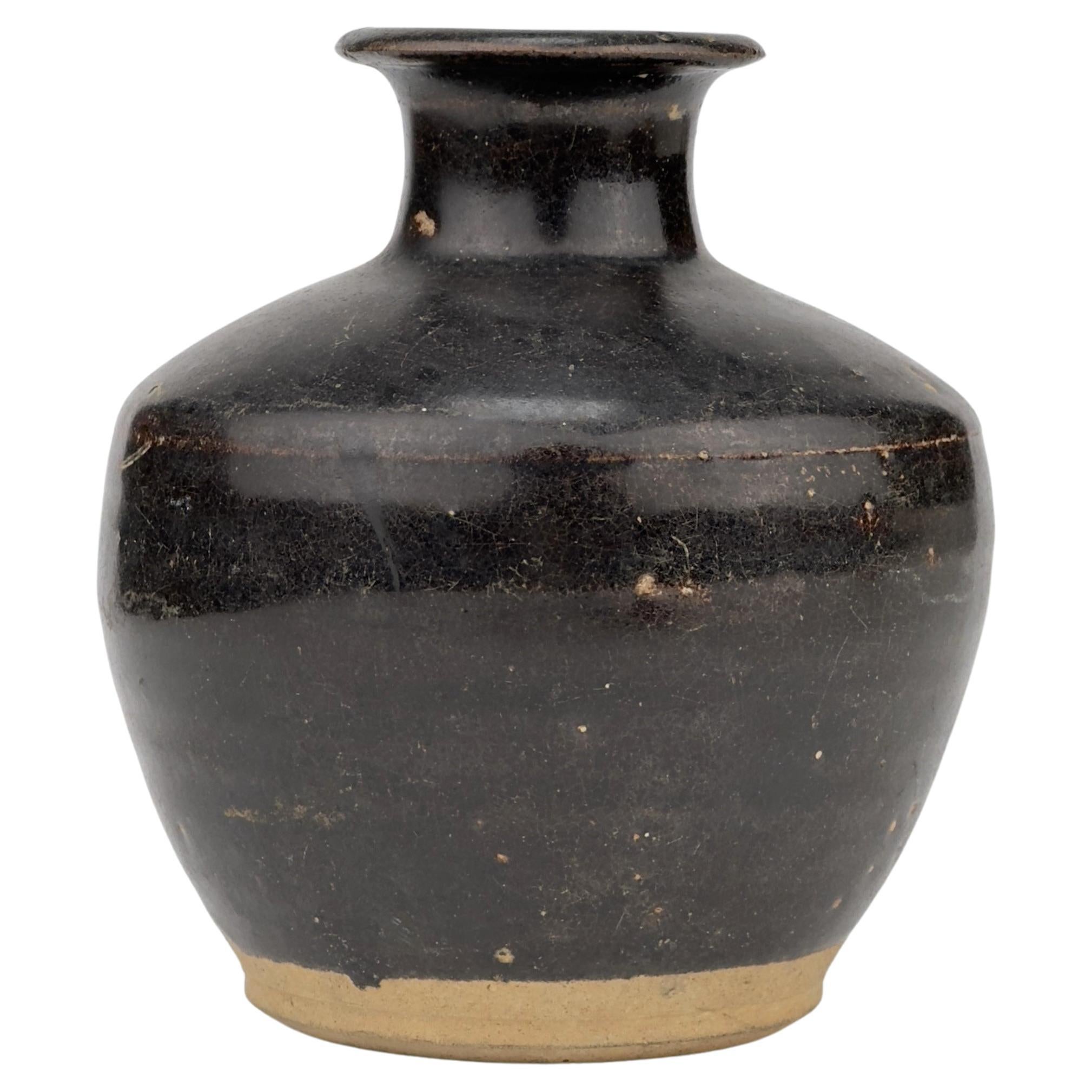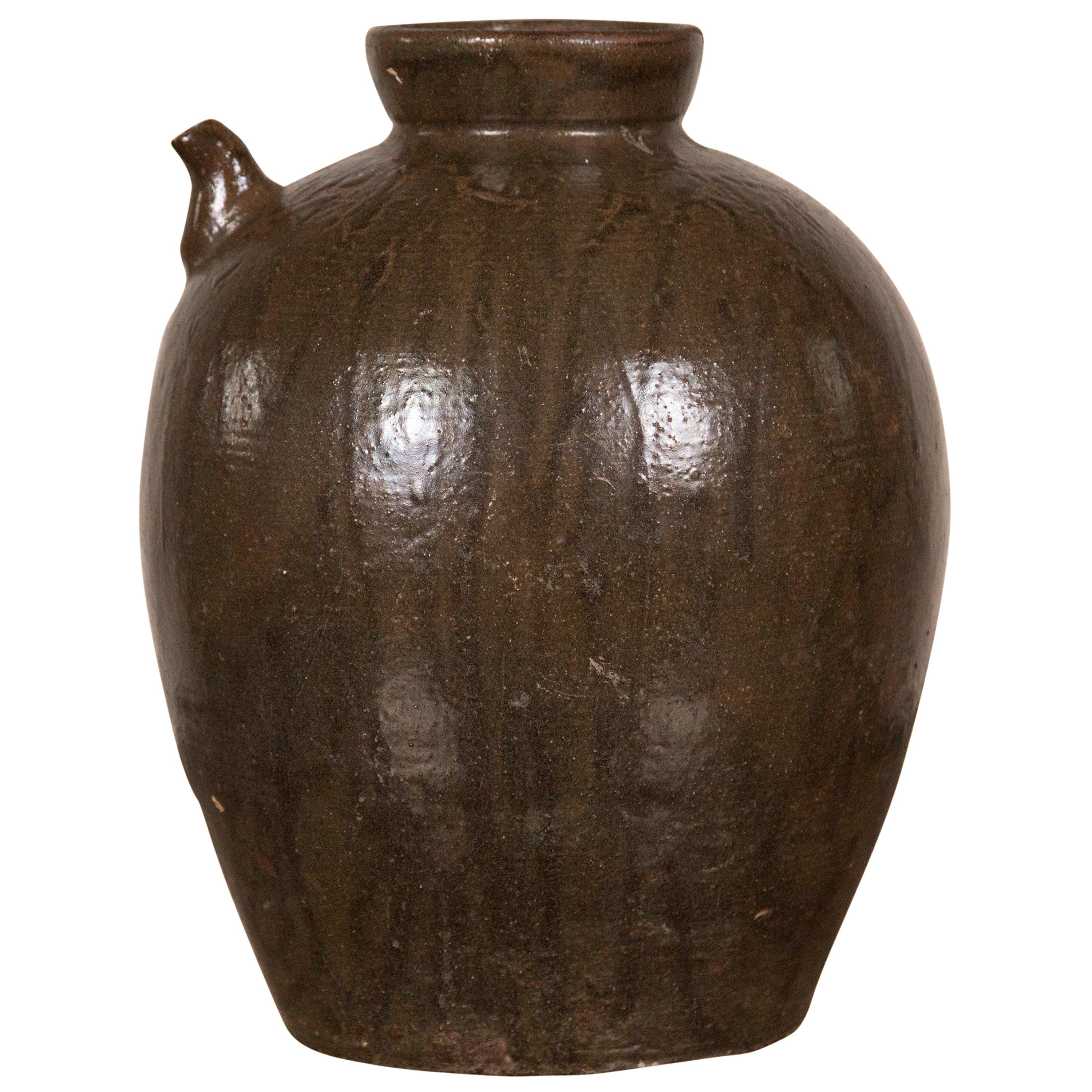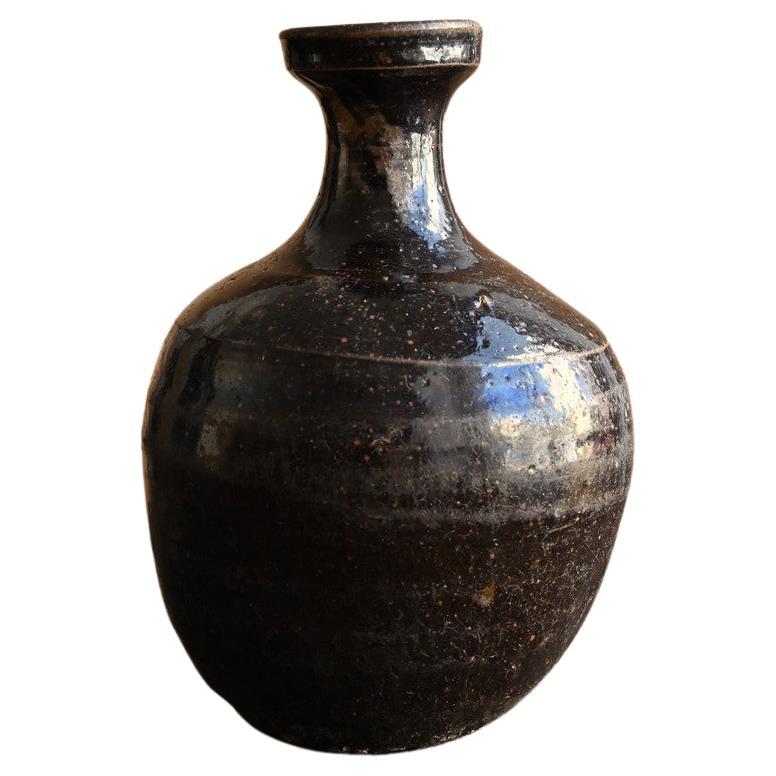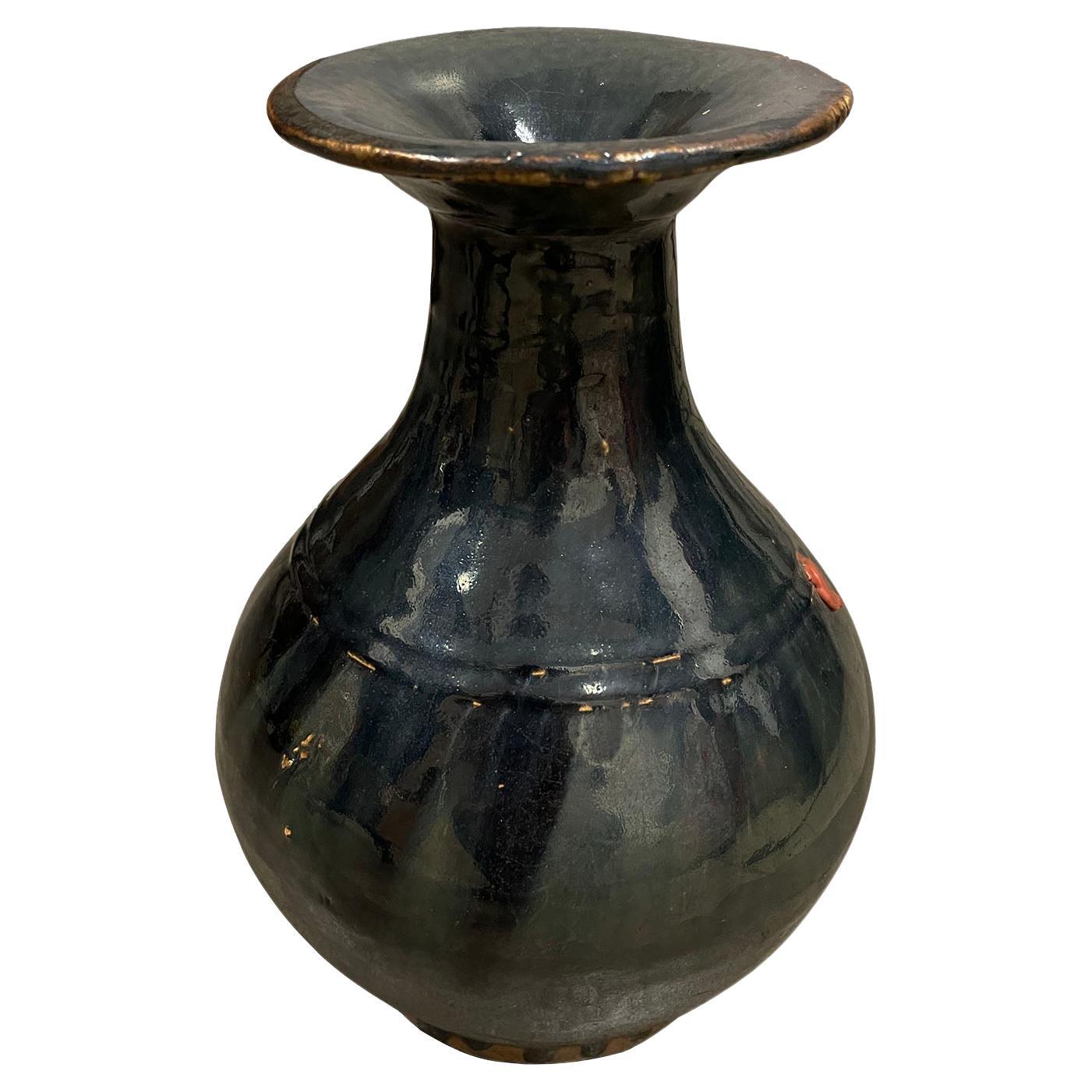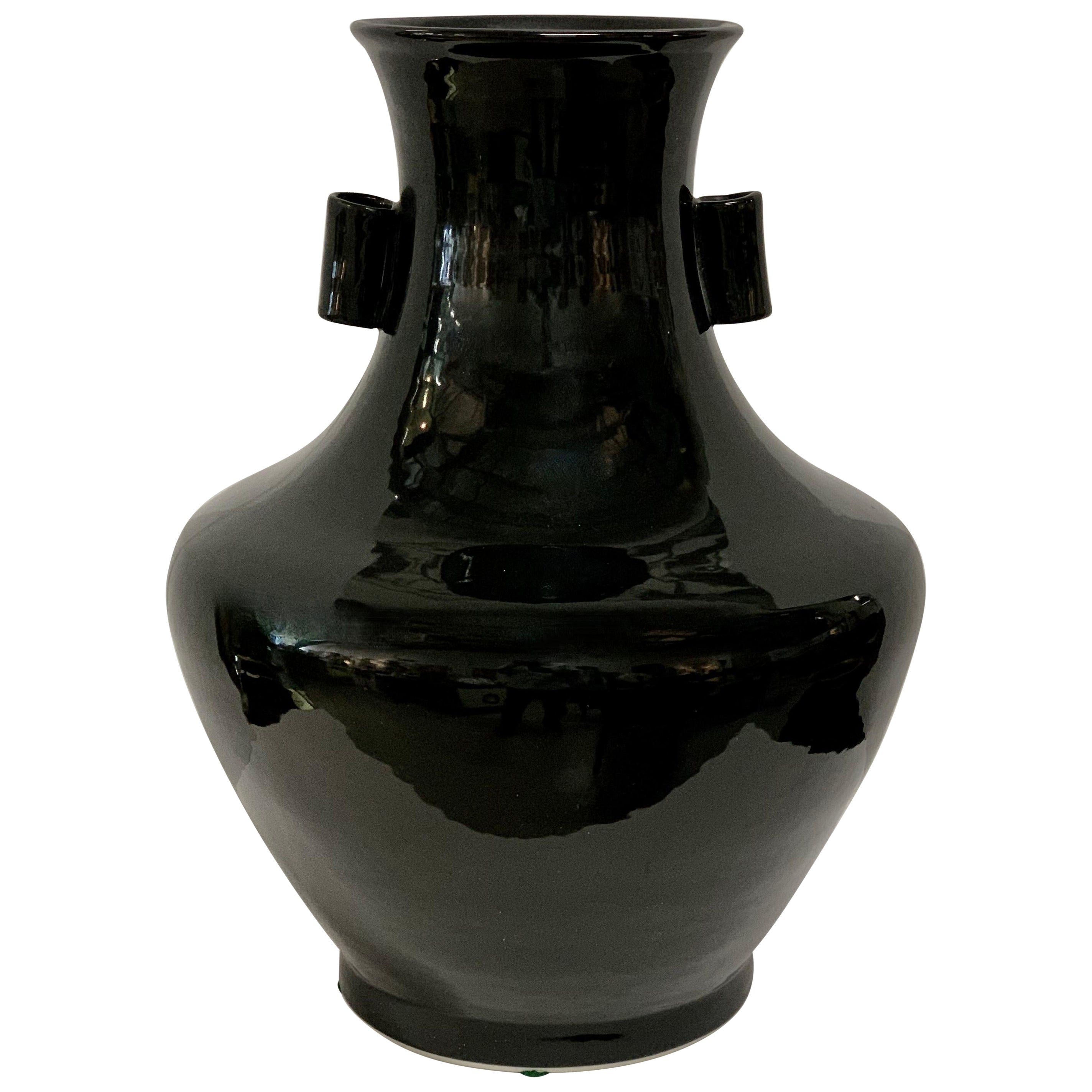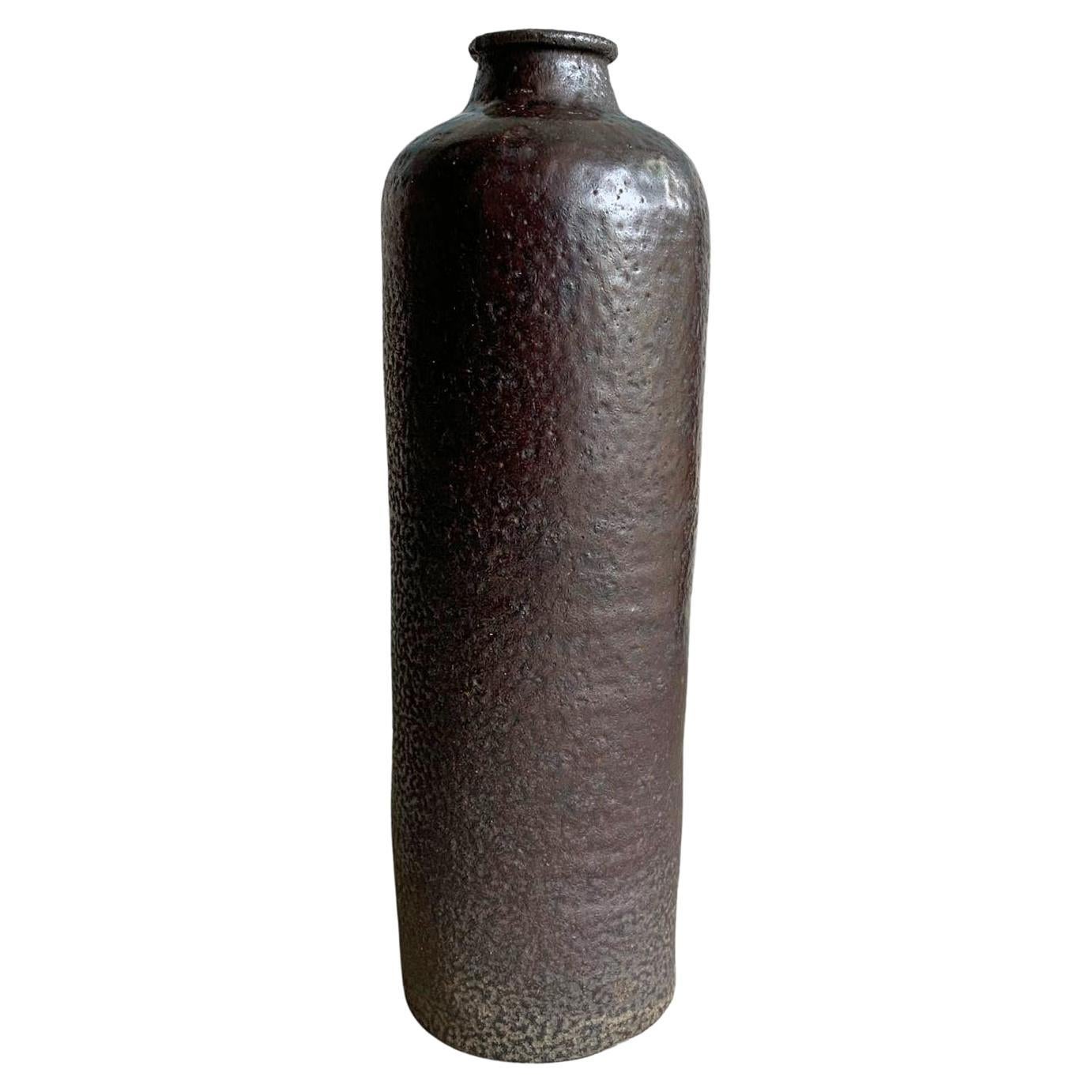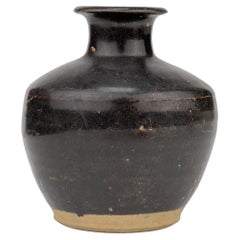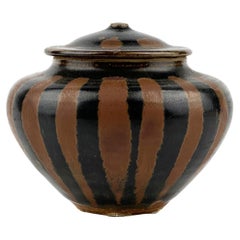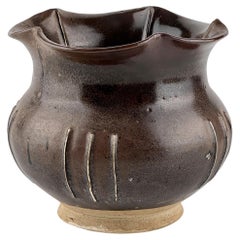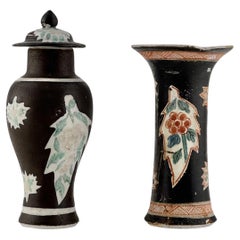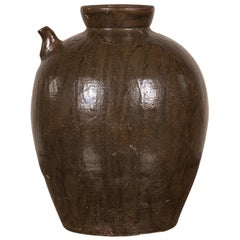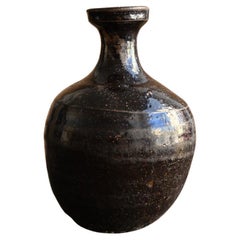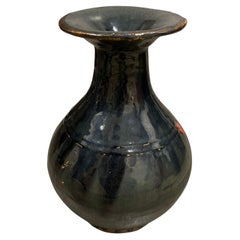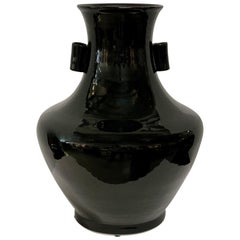Items Similar to Black-Glazed Russet-Painted Bottle Vase, Northern Song-Jin Dynasty
Want more images or videos?
Request additional images or videos from the seller
1 of 14
Black-Glazed Russet-Painted Bottle Vase, Northern Song-Jin Dynasty
$6,396
$15,99060% Off
£4,890.08
£12,225.2160% Off
€5,632.39
€14,080.9760% Off
CA$8,962.76
CA$22,406.8960% Off
A$10,006.08
A$25,015.1960% Off
CHF 5,243.03
CHF 13,107.5860% Off
MX$122,484.18
MX$306,210.4660% Off
NOK 66,586.57
NOK 166,466.4360% Off
SEK 62,782.68
SEK 156,956.7160% Off
DKK 42,035.08
DKK 105,087.7160% Off
About the Item
Of broad pear shape rising from a low foot to a waisted neck and flared rim, covered overall with a lustrous brownish-black glaze with rare six bands of russet-strokes radiating in yuhuchunping shape.
Period : Northern Song-Jin Dynasty
Type : Yuhuchunping
Medium : Black glazed with russet painted
Provenance : Acquired in late 1990s from Hongkong
Reference :
1) Bonhams London 12 MAY 2016 - Fine Chinese Art - Lot 30
(Price realised : £ 37,500 / Type : Closely Related)
2) Bonhams London 11 MAY 2021 - Roger Keverne Ltd Moving On - Lot 99
(Price realised : £12,750 / Type : Related)
3) Christies NEW YORK 22 MAR 2018 - The Classic Age of Chinese Ceramics - The Linyushanren Collection, Part III - Lot 521
(Price realised : 35,000 USD / Type : Closely Related)
4) Christies HONG KONG 30 MAY 2024 - Important Chinese Ceramics and Works of Art - Lot 2854
(Price realised : HKD 201,600 / Type : Related)
* Black-glazed ceramics in Northern Song-Jin dynasty
Black-glazed ceramics, also known as "black ware," were prominent during the Northern Song (960–1127) and Jin (1115–1234) dynasties. The creation of these ceramics involved the application of a rich, dark glaze, typically achieved using iron oxide. This glaze was applied over a stoneware or porcelain body, then fired at high temperatures to produce a glossy, dark finish ranging from deep brown to black. Notable techniques included the "tea-dust" glaze, which exhibited a speckled appearance, and the "oil-spot" glaze, characterized by small, iridescent spots. The high-temperature firing process was crucial for achieving the desired glaze effects and durability.
The design of black-glazed ceramics often included intricate carvings, incised, or molded decorations. Common forms included bowls, vases, jars, and ceramic pillows. These pillows, used as headrests, featured detailed designs such as floral patterns, animals, and mythical creatures. An example of this is a black-glazed ceramic pillow from the Jin dynasty, which features carvings of two lions. Similar pieces can be found in the Guanfu Museum, where black-glazed pillows depicting the Twelve Zodiac Animals are displayed. The combination of sophisticated glazing techniques and detailed decorative elements exemplifies the advanced ceramic artistry of the Northern Song and Jin dynasties.
- Dimensions:Height: 11.42 in (29 cm)Diameter: 3.15 in (8 cm)
- Materials and Techniques:Stoneware,Glazed
- Place of Origin:
- Period:
- Date of Manufacture:10-13th century
- Condition:Minor fading.
- Seller Location:seoul, KR
- Reference Number:1stDibs: LU9577240165832
About the Seller
4.8
Gold Seller
Premium sellers maintaining a 4.3+ rating and 24-hour response times
Established in 1999
1stDibs seller since 2023
38 sales on 1stDibs
Typical response time: <1 hour
- ShippingRetrieving quote...Shipping from: seoul, Korea South
- Return Policy
Authenticity Guarantee
In the unlikely event there’s an issue with an item’s authenticity, contact us within 1 year for a full refund. DetailsMoney-Back Guarantee
If your item is not as described, is damaged in transit, or does not arrive, contact us within 7 days for a full refund. Details24-Hour Cancellation
You have a 24-hour grace period in which to reconsider your purchase, with no questions asked.Vetted Professional Sellers
Our world-class sellers must adhere to strict standards for service and quality, maintaining the integrity of our listings.Price-Match Guarantee
If you find that a seller listed the same item for a lower price elsewhere, we’ll match it.Trusted Global Delivery
Our best-in-class carrier network provides specialized shipping options worldwide, including custom delivery.More From This Seller
View AllBlack glazed bottle, Late Ming Era(16-17th century)
Located in seoul, KR
Black glazed bottle from the late Ming dynasty binh thuan cargo. An identical piece is included on page 146 of the Bin Thuan catalog titled 'The Age of Disco...
Category
Antique 16th Century Vietnamese Ming Antiquities
Materials
Pottery
$792 Sale Price
20% Off
A Russet-Splashed Blackish-Brown-Glazed Jar, Song Dynasty
Located in seoul, KR
Lustrous blackish-brown glaze decorated on the exterior with lines of splashes of russet color. This jar features a rounded and voluminous body, with its shoulders gently curving upward to meet the lid. The lid is topped with a small knob-like handle at the center, creating a harmonious and well-balanced overall proportion.
Under microscopic magnification, the brown-glazed...
Category
Antique 15th Century and Earlier Hong Kong Antiquities
Materials
Ceramic
$8,775 Sale Price
35% Off
A Cizhou Blackish Brown Glazed Stoneware Foliate Jar, Northern Song Dynasty
Located in seoul, KR
The jar is covered with a deep, warm blackish-brown glaze. The glaze is smooth and even, with a soft sheen.
The foliate rim has a gentle, wave-like design that gives the jar a natur...
Category
Antique 15th Century and Earlier Hong Kong Antiquities
Materials
Stoneware
$2,600 Sale Price
35% Off
Extremely Rare Famille Noire Vases from Ca Mau Ship, Qing Dynasty, Yongzheng Era
Located in seoul, KR
Famille noire is a type of Qing Dynasty Chinese porcelain, distinguished by its black-glazed background with vivid natural motifs in green, yellow, and other bright colors. Developed...
Category
Antique Early 18th Century Vietnamese Qing Antiquities
Materials
Ceramic, Porcelain
$2,240 Sale Price / set
30% Off
Earthenware Pottery Jar, Han Dynasty(206 BC-220 AD)
Located in seoul, KR
This jar would have served as a mortuary object (mingqi), placed in a tomb as a substitute for the more valuable bronze and lacquer vessels. Along with a variety of other funerary earthenware objects, attendant figures, and animals, richly decorated vessels of this kind were intended to serve the spirit of the deceased in the afterlife.
Period : Han dynasty
Type : Jar
Medium : Earthenware
Dimension : 28.5 cm(Height) x 11cm(Mouth Diameter)
Condition : Good(Overall in well-preserved ancient burial condition with some soil still adhering (showing minor abrasions and wear due to prolonged burial underground)
Provenance : Acquired in late 1990s from Hongkong
* Han Dynasty Earthenware...
Category
Antique 15th Century and Earlier Hong Kong Han Antiquities
Materials
Earthenware
$2,093 Sale Price
30% Off
A Rare Sancai-Glazed Pottery Jar, Tang Dynasty
Located in seoul, KR
The jar is of globular shape and is decorated to the body with a geometric design band of lozenge-shaped motifs in blue, green, ochre and cream below a plain ochre everted mouth rim,...
Category
Antique 15th Century and Earlier Hong Kong Tang Antiquities
Materials
Earthenware
$7,950 Sale Price
50% Off
You May Also Like
Qing Dynasty Dark Glazed Water Jug Vase with Petite Spout from the 19th Century
Located in Yonkers, NY
A Qing Dynasty glazed ceramic water jug vase from the 19th century with petite spout. This antique Chinese Qing Dynasty glazed ceramic water jug from the 19th century enchants with i...
Category
Antique 19th Century Chinese Qing Bottles
Materials
Ceramic
Korean antique pottery black glaze vase/15th-16th century/small bottle
Located in Sammu-shi, Chiba
This is black glazed pottery made in Korea from around the 15th to 16th century.
This era in Korea is called the Joseon Dynasty.
This black glazed pottery was only produced for a sho...
Category
Antique 16th Century South Korean Other Vases
Materials
Pottery
Early 20th Century Chinese Black Glaze Pottery Vase
Located in Pomona, CA
Our wonderful collection of handmade old vintage Chinese hand made glazed pottery vase will make great accent pieces for any room of your house. It has some imperfection signs of age...
Category
Early 20th Century Chinese Chinese Export Vases
Materials
Pottery
$296 Sale Price
25% Off
Chinese Black Glazed Handled Vase
Located in Palm Springs, CA
An elegant Chinese black glazed ceramic pottery vase with handles. We acquired this out of a nice Palm Springs estate. It has great scale at 20 inc...
Category
20th Century Chinese Ceramics
Materials
Ceramic
Chinese Ceramic Wine Bottle with Dark Brown Glaze, 18th Century
Located in Jimbaran, Bali
A visibly old ceramic wine bottle from 18th century China in a dark brown glaze. This bottle comes from Shanxi Provence and is a wonderful example...
Category
Antique 19th Century Chinese Qing Bottles
Materials
Ceramic
20th Century Chinese Flambe Glazed Bottle Vase
Located in Petworth, West Sussex
A Chinese flambe glazed bottle vase with Jingdezhen Zhi seal mark, 20th century, in Qing style, with a purple-streaked upper section, seal ma...
Category
Early 20th Century Chinese Qing Ceramics
Materials
Ceramic
$1,034 Sale Price
20% Off
More Ways To Browse
Chinese Song Dynasty
Song Dynasty Furniture
Antique Iron Glaze
Antique Bottle Display
Song Porcelain
Song Dynasty Ceramics
Chinese Ceramics Song Dynasty
Rare Antique Asian Vases
Antique Bottle Mold
Dynasty Jar Glazed
Song Dynasty Vase
Song Dynasty Porcelain
Antique Ceramic Bottles
Antique Stoneware Jars
Six Dynasties
13th Century Vase
Iron Chinese Vase
Chinese Vase Lion
